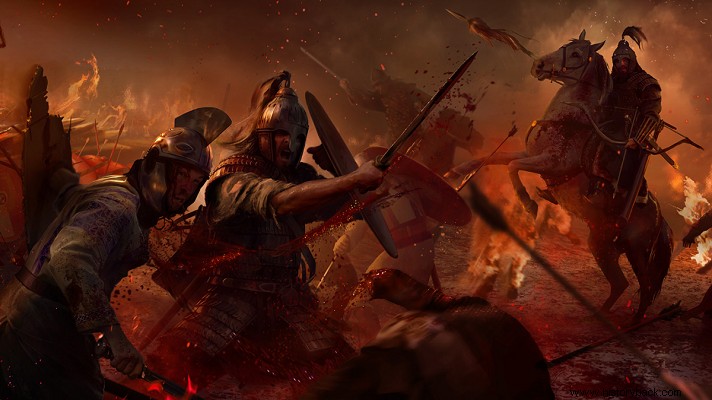
Attila's army could also be described as the Hunnic imperial army. Contrary to the army he inherited from his forefathers, Attila included in his war machine a large number of vassal warriors, mainly Germans. They fought under the command of their own leaders, following their customary way of fighting.
The Unnic army was anyway organized on a racial basis, so the integration of Germans into it, on the same standards, did not create a problem of homogeneity. The Germans supplied the army with infantry, which the Huns did not have, but also with heavy cavalry. However, the strength of the Unnic army came from the huge number of elite, light, archer horsemen.
The Hunnic light horseman was armed with at least two compound bows, of great piercing capacity and range, with a javelin, which he also used as a spear on occasion, with swords and a small wooden shield covered with animal skin. He fought in sparse formation, as a mounted archer, relying for success on his speed and ability to fire a large number of arrows in a short amount of time.
The Hunnic light cavalry would attack in waves, approach the enemy within a bowshot distance, 100-200m, and charge continuously at him, constantly closing in. If the opponent attempted a counterattack, the Huns retreated, or even feigned flight, with the aim of enticing and outrunning him. The Roman cavalry did not impress them. They had heavier armor than the Roman light cavalry and were clearly faster than their more heavily armed opponents.
The heavy German cavalry was another kind of threat to the Huns. The Germans were completely harmless from a distance, since they had no bows. However, if they managed to approach at a shorter distance, they became really dangerous for the Huns. The latter therefore made sure to always keep their distance from the German horsemen, straining them at the same time with continuous arrow shots.
If the German horsemen, either because of losses or moral decline, showed signs of disorganization or confusion, then and only then did the Huns rush against them with wild shouts and swords and javelins in hand. They also followed this tactic against the barbarian infantry. However, against the imperial infantry, which had organic divisions of archers fighting in dense order, things were much more difficult for the Huns.
Foot archers by definition, due to greater stability provided by the terrain, shoot more accurately than mounted archers. Thus the Huns did not dare approach the imperial infantry. All that was left for them was to bypass it and if possible to outflank it.
The Huns, however, also had some heavy cavalry, which formed the royal guard. These horsemen were armed with long spears, a bow, a small shield, breastplate and helmet. These men accompanied the respective Hun king and intervened in the battle only if absolutely necessary.
The Huns would build a camp by forming a wide perimeter with chariots, tied together. At regular intervals they left gaps between the carriages, which constituted the "gates" of the camp.
